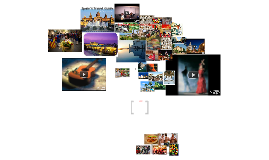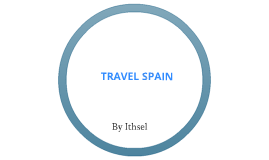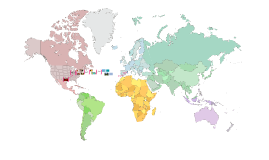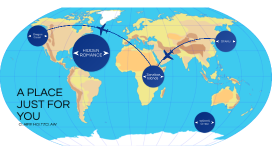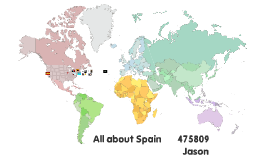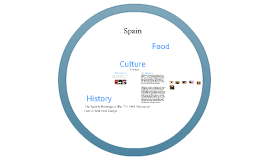Spain Travel Presentation
Transcript: Spaniards spend much of their leisure time outdoors, such as sitting at sidewalk cafes or in town squares. Summer vacations at Spain's beaches have become increasingly popular. On weekends, many Spaniards drive to Spanish countryside for picnics or overnight trips. Soccer is Spain's most popular sport, and many stadiums hold more than 100,000 spectators. Bullfighting is Spain's best-known spectacle, so most cities have at least 1 bull ring. Mainland Spain is a mountainous region, dominated by mountain chains and plateaus. Many are major tourist attractions. Spain includes the Balearic Islands in the Mediterranean, and the Canary Islands in the Atlantic, both of which have remarkable scenery. Generally speaking, most of Spain experiences dry and warm summers, but some regions are influenced by the Atlantic Ocean. The Barri Gotic (Catalan for "Gothic Quarter") is the center of the old city of Barcelona, where many of the buildings date from medieval times. Barcelona is home of many points of interest declared World Heritage Sites by UNESCO. Barcelona beach was listed as number on in a list of the top ten city beaches in the World according to National Geographic and Discover Channel. Barcelona has many venues for live music and theater, including the world-renowned Gran Teatre del Liceu opera house. Barcelona has a long sporting tradition, and is home to FC Barcelona. Exciting events are held at the largest stadium in Europe: FC Barcelona's Nou Camp. The Cathedral of St. Mary is the largest of all medieval and Gothic cathedrals, and is very lavishly decorated. The most important art collection of Seville is the Museum of Fine Arts of Seville because it contains many masterworks by numerous artists. The Alcazar, a royal palace in Seville, is the top tourist site in Seville, and is the oldest royal palace still in use in Europe. The Metropol Parasol, in La Encarnacion square, is the world's largest wooden structure. Works Cited Madrid By: Justin Yan Gonzalez 5th Barcelona Spain Travel Project Food of Spain Seville The Prado, with its extensive collection of Spanish art, is the most famous museum of Spain and one of the best in the world. The National Archaeological Museum contains many prehistoric cave paintings. Many Catholic churches, some of which are among the most important Spanish religious artworks, are in Madrid. Madrid hosts the largest bullring in Spain, with seating for about 25,000 people. Season starts March and ends in October. Madrid is home to a world-renowned football team, Real Madrid, and has numerous stadiums to host other sports. The Royal Seat of San Lorenzo de El Escorial is a UNESCO World Heritage Site, and also a historical seat of the King of Spain. "Spain." CIA. Central Intelligence Agency, 12 June 2007. Web. 16 May 2013. <https://www.cia.gov/library/publications/the-world- factbook/geos/sp.html>. "Spain Climate and Weather." Country Reports. CountryReports, 15 May 2011. Web. 16 May 2013. <http://www.countryreports.org/country/Spain/geography/climate.htm>. "Spain Facts: Learn Spain Facts." Country Reports. CountryReports, 29 Apr. 2011. Web. 16 May 2013. <http://www.countryreports.org/country/Spain.htm>. "Spain Geography." Country Reports. CountryReports, 15 May 2011. Web. 16 May 2013. <http://www.countryreports.org/country/Spain/geography/overview.htm>. "Spain." National Geographic. National Geographic Society, 12 Jan. 2010. Web. 16 May 2013. <http://travel.nationalgeographic.com/travel/countries/spain-guide/>. Spaniards eat large amounts of seafood prepared in many ways. This includes crabs, sardines, snapper, squid, and land animals such as ham and chicken. Stews and soups are popular in Spain. Gazpacho is a popular dish during warm weather. Most regions of Spain produce wine, and Spaniards drink wine with all meals expect breakfast. Other popular beverages include beer, soft drinks, strong black coffee, and thick hot chocolate. Hot chocolate is usually served with deep-fried strips of dough called churros. Recreation Geography






